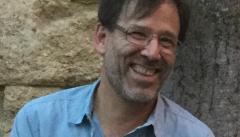
Robert Arkowitz: Probing morphogenesis and drug susceptibility at multiple scales in a human fungal pathogen (Séminaire Externe MAP - Equipe FungiPath)
Dr Robert Arkowitz de l'Institut de Biologie Valrose, Université de Côte d’Azur/CNRS/Inserm, invité par l'Equipe FungiPath
Abstract:
We have been focusing on the yeast to hyphal transition, as well as subsequent filamentous growth, both that of the main filament apex and filament branching, in the human fungal pathogen, Candida albicans. Filament branching results in an increase in the number of growth sites and may play a role in virulence in this fungal pathogen [1,2]. We have been using live-cell microscopy to investigate these processes in C. albicans and to analyze morphological, as well as molecular, changes associated with these transitions. Our results indicate that filament branching is a distinct growth state. Specifically, we observe differences between branch and main filament growth, together with distinct distributions and/or levels of reporters for exocytosis, endocytosis and critical lipids. In contrast, the distribution and level of the key polarity small GTPase Cdc42 are similar between branch and main filament growth. We have also been investigating the biophysical characteristics of the cytoplasm using a micro-rheological probe [3], and observed a striking difference between these growth processes with respect to cytoplasmic crowding [4], as well as in response to antifungal drugs. In summary, at the cellular scale, our results reveal that filament branching is a distinct growth process. Furthermore, at the sub-cellular scale, our results reveal differences in the cytoplasm during morphogenesis and response to antifungal drugs.
[1] Barelle CJ et al. Eukaryot. Cell 2003 2:398-410.
[2] Veses V et al. Mol Microbiol. 2009 71:505-19.
[3] Delarue M et al. Cell 2018 174:338-49.
[4] Serrano A et al. bioRxiv 2024 10.1101/2024.11.16.623909.
Informations complémentaires
- christophe.bruel@univ-lyon1.fr
-
Amphi 5 DEAMBULATOIRE

